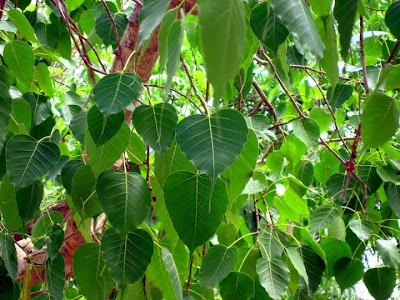 |
| Teak (Tectona grandis) |
Tectona grandis Linn (Teak) is a large deciduous tree belonging to family Verbenaceae. It has yellowish to reddish brown wood and papery leaves that are often hairy on the lower surface. The tree attains a height up to 40 meters. Teak fruit is a drupe enclosed in a brown, papery calyx. The tree bears bluish to white flowers. It requires a dry tropical climate for its growth. It flowers in February and March. Teak is native mainly to India, Indonesia, Malaysia, Thailand and Burma but is naturalized and cultivated in Africa and Caribbean as well.
It is commonly known as sagwan, saka (India), Djati, Jati (Indonesia), Kyun (Myannmar), Teck, Mai Sak (Thailand), Giati (Vietnam) and Teca (Brazil). Tectona grandia, Tectona hamiltoniana, and Tectona philippinensis are the other related species of the tree. The biggest and oldest (about 1,500 years old) teak is in Uttaradit, Thailand with a height is 47 metres.
Tectona grandis is an economically important species and the best source of most commercial teak wood products. Teak's high oil content, high tensile strength and tight grain makes it particularly suitable for outdoor furniture applications. It is used in the furniture making, boat decks and for indoor flooring. It is widely used to make the doors and house windows. It is resistant to the attack of termites. The wood contains scented oil which is the repellent to insects. Both the root, bark and the young leaves of teak produce a yellowish-brown or reddish dye used for coloring paper, clothes, matting, and even edibles.
Different parts of this tree are used in ayurveda for treating various health ailments for its acrid, sedative, anthelmintic and expectorant properties. It useful in the treatment of indigestion, headache, gravid uterus, piles, leucoderma, dysentery and burning pain over liver region. The bark is bitter tonic and is considered useful in fever. The ashes of wood applied to swollen eyelids and are said to strengthen the sight.
The oil of nuts promotes the growth of hair and removes itchiness of skin. The flowers and the seeds are diuretics. In traditional medicine, a wood-powder paste of the treeis used to treat headaches, swellings and dermatitis (a skin reaction), as well as worms and other parasites of the gut.
The oil of nuts promotes the growth of hair and removes itchiness of skin. The flowers and the seeds are diuretics. In traditional medicine, a wood-powder paste of the treeis used to treat headaches, swellings and dermatitis (a skin reaction), as well as worms and other parasites of the gut.
.jpg)
.jpg)

.jpg)
.jpg)


.jpg)


_leaves_at_Narendrapur_W_IMG_4101.jpg)
.jpg)







.jpg)

.jpg)
.jpg)
.jpg)
.jpg)